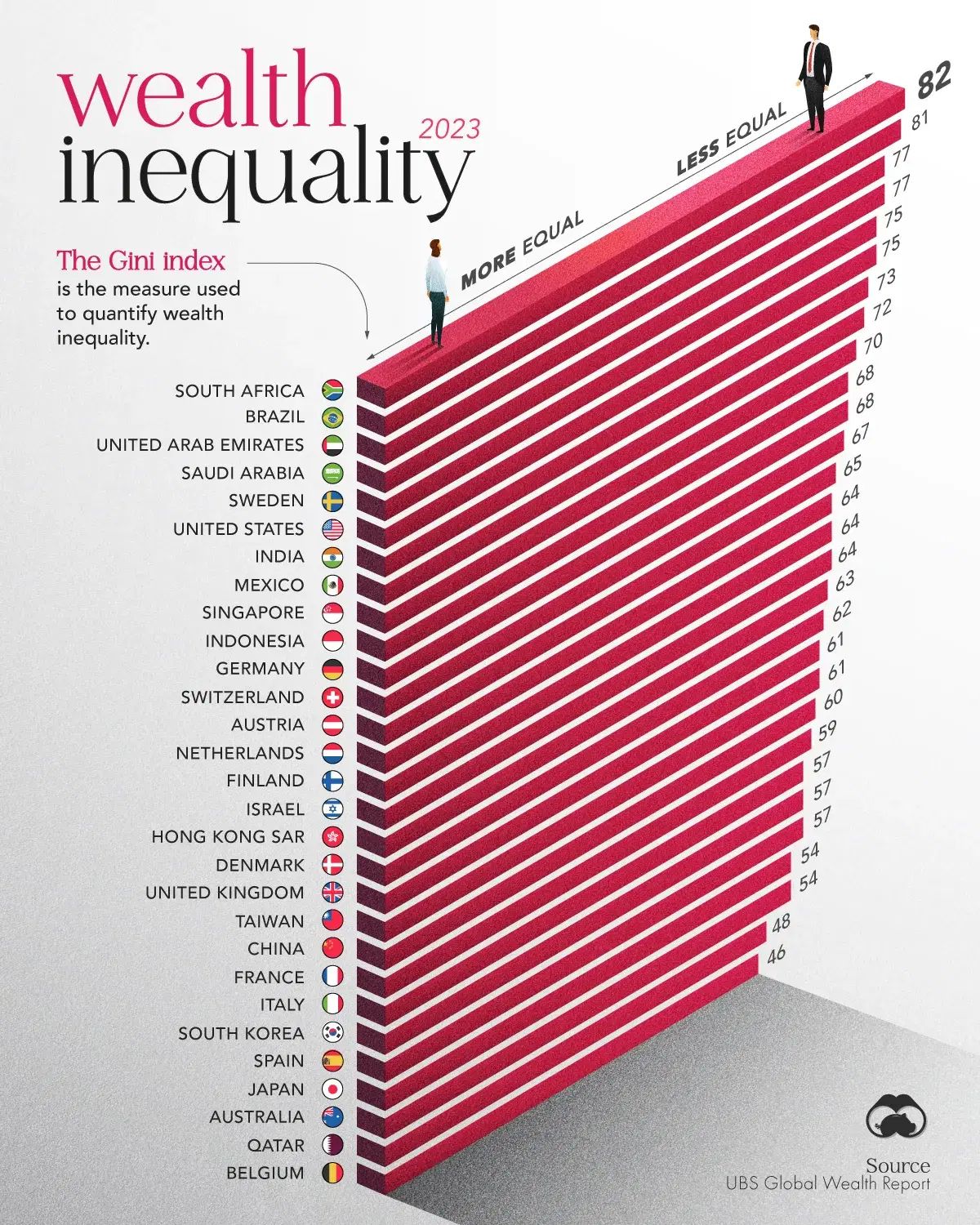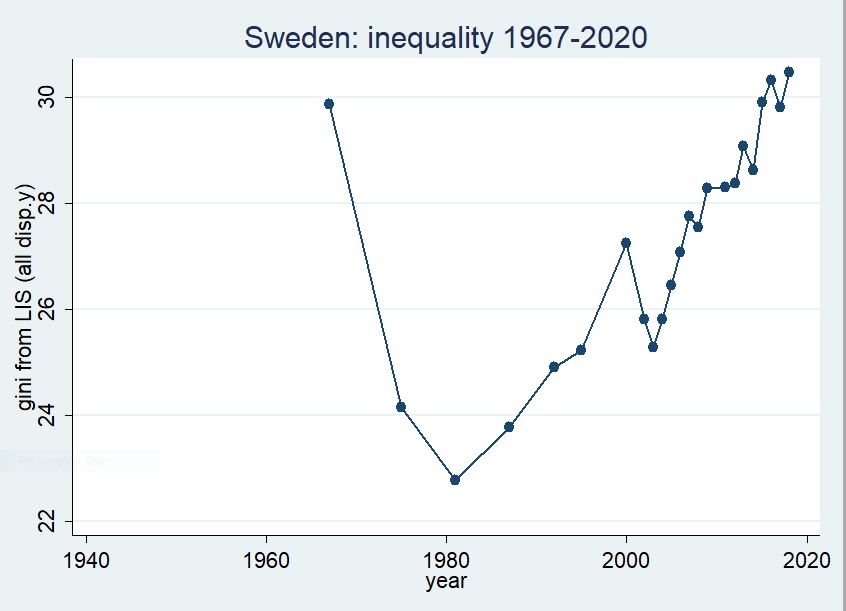The demise of the ‘Swedish model’ Source The Gini Index quantifies the wealth disparity between the richest and the poorest members of a society. A score of 100 represents perfect inequality. In the 1960s and 1970s Sweden was world-famous for its welfare state and equality. Since then income and wealth disparities have steadily increased. The development in Sweden over four decades has taken us away from what was once a celebrated ‘Swedish model’. Deplorable! Added 14:20 GMT: Income inequality in Sweden has continued to trend upwards over four decades. According to figures from Statistics Sweden (SCB) — published in January last year — the inequality measure, the ‘Gini coefficient,’ which was 0.27 in 2005, had increased to 0.33 by 2021. This is the
Topics:
Lars Pålsson Syll considers the following as important: Politics & Society
This could be interesting, too:
Lars Pålsson Syll writes Schuldenbremse bye bye
Lars Pålsson Syll writes Vad historien lär oss
Lars Pålsson Syll writes Krigskeynesianismens återkomst
Lars Pålsson Syll writes From one old guy to another old guy
The demise of the ‘Swedish model’

The Gini Index quantifies the wealth disparity between the richest and the poorest members of a society. A score of 100 represents perfect inequality.
In the 1960s and 1970s Sweden was world-famous for its welfare state and equality. Since then income and wealth disparities have steadily increased. The development in Sweden over four decades has taken us away from what was once a celebrated ‘Swedish model’.
Deplorable!
Added 14:20 GMT: Income inequality in Sweden has continued to trend upwards over four decades. According to figures from Statistics Sweden (SCB) — published in January last year — the inequality measure, the ‘Gini coefficient,’ which was 0.27 in 2005, had increased to 0.33 by 2021. This is the highest recorded level since measurements began.
Today, the 10 percent of the population with the highest incomes have as large a share of the total disposable income as roughly the 50 percent of the population with the lowest incomes.
This bleak picture of equality — in a country that was once a model and the most equal country in the world — is further exacerbated by data presented in reports from the Swedish Trade Union Confederation (LO), where it is shown that the economic elite — in LO’s data comprising 50 CEOs of large Swedish companies — have a higher relative income than ever before. On average, the CEOs’ incomes are at a level equivalent to more than 50 industrial workers’ wages.
As Branko Milanovic recently noted: “New Swedish data in @lisdata confirm the well-known increase of income inequality since around 1980. Inequality in Sweden is still below the OECD average, but it is a country with possibly the largest relative increase in inequality among OECD.”

